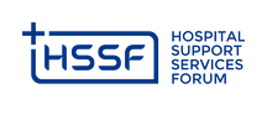Quick Poll Summary: Engaging Staff During COVID-19The disruptions in the daily work of support services employees caused by COVID-19 preparations and subsequent growth in cases, has challenged leaders to find new ways to engage and motivate their people, who have experienced at varying degrees heightened levels of stress from new protocols, reassignments, additional workloads, conflicts with work-life balance, fear of infection, and sadness from high patient death rates. On April 24 HSSF launched a Quick Poll to see how members have responded. Following is a summary of what they said. Participants received the verbatim responses. We also searched online media outlets for illustrative examples. How much of a challenge has COVID-19 been? The impact has been mixed. One respondent actually reported exceptionally low absenteeism. Patient floors have been emptied of non-COVID patients, lightening loads and freeing up staff for other work, including attending to COVID-19 units. But while some hospitals in hotspot geographies have been pushed to their limits caring for COVID-19 patients and PUIs, others have in a sense over-prepared and are coping easily from a capacity standpoint. Still, there are many stress points. At least one leader reported losing employees who did not want to shift into a patient-facing role. What do stressed employees need? A good place to start is the results of a recent survey by the Gallup organization administered from March 13 to April 14, which highlighted the importance of communicating, enabling employees with tools for the job, and holistically caring for well-being. A top-line conclusion is “Healthcare workers need to know their leaders have their back.” These themes also ran through our findings from the Quick Poll. CommunicatingRespondents are unanimous on the importance of communicating frequently. Sean Shapert at MedStar summed it up, “Communication is key…you can’t do it enough.” Many hospitals have at the heart of their communications an incident command center enabling questions and concerns to be quickly escalated. Good communications practice include daily updates in the form of daily staff huddles, frequent rounding (in-person and virtual), nightly status updates, town hall meetings via video, and daily emails. Some hospitals use CEO calls and online dashboards. Facebook or other social media are sometimes used. Communications convey lots of information, but also encouragement. Education is an essential purpose of communication. Employees become nervous when they don’t fully understand new and changing procedures for their jobs. A system on the West Coast reports success with constant interdisciplinary education regarding myths and facts, and straight talk about the state of PPE availability. Another has infection prevention managers speak with staff and provide reassurance. Yet another has partnered with a nurse educator to help streamline and distribute frequently evolving job aids. Enabling EmployeesIt’s important that employees feel confident they can get the job done safely. Managers are responsible for making sure their employees know what their jobs are and have the tools to get them done. COVID-19 has brought this requirement to a new level. Foremost on this topic is PPE, having enough of the right kind and instructing employees on how to use it to stay safe. One overseas respondent reported that they regularly update staff about the status of the PPE stockpile. Sometimes enablement extends outside the workplace - another system recognized that a shutdown of public transportation meant employees couldn’t easily get to work, so enlisted Uber to fill the gap. Caring for Well-BeingRespondents had much to say about this. According to the Gallup article, well-being includes “career, social, financial, community, and physical” elements connected to work life. We might add psychological to address employees’ fear of contracting COVID-19. When it comes to well-being, money talks. In a recent interview, Michael Dowling, CEO and president of Northwell Health praised front-line workers and described the system’s initiative to give each of them (40,000 in total) $2500 and an extra week of PTO. Another system offers honoraria for all ranks of staff working overtime as well as emergency response allowances for those performing high risk procedures in high risk areas, adding to it one extra day off every two weeks for staff working in those areas. There are other examples of COVID-related hazard pay. A system in the Midwest also goes so far as to give leaders mandatory time off so they can decompress. One respondent cited a policy allowing employees to go negative on PTO to ensure they retain full pay during flex staffing periods. Many hospitals and health systems also provide free meals in the form of meal tickets, donations from restaurants, coffee and tea from franchise kiosks, and treats at the ends of shifts. One system centralized distribution of food and gift donations to ensure equal distribution among both COVID and non-COVID departments. Flexible scheduling is often mentioned as a way to accommodate workers’ personal situations. Other initiatives include free hotel accommodations and rental allowances for staff working in high risk areas, free parking, and an emergency fund for staff in hardship situations. Recognizing employees’ contributions and sacrifices is an important part of boosting feelings of well-being. One system uses “Kudoboard”, a website posted with videos, links, and photos from leaders, local celebrities, and community members thanking caregivers. Stories in the media about recognition are common these days. Here’s a story about a physician at Spring Valley Hospital showing his respect for a housekeeper by helping to clean a room. Communities are helping with recognition. Here are stories from Stanford Hospital and UCHealth about first-responders showing their appreciation. Finally, check out this Recharge Room at Mount Sinai in New York. It's a series of rooms any front line worker can visit to have a peaceful moment, nap, or refreshments. The measures described above are on top of employee engagement programs that exist in more normal times. Click here to read a summary of the HSSF collaborative study done in 2018 of employee turnover challenges and solutions. For more information contact: |
